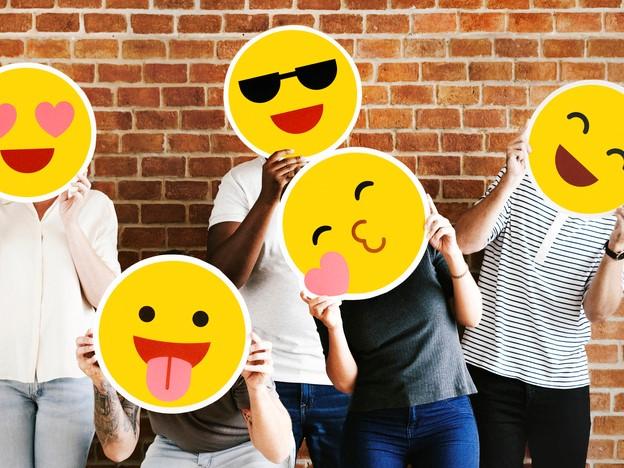
Using knowledge graphs to integrate social media into curricula

Social media can be a valuable learning resource for business students because it can help them connect complex theories with day-to-day business decisions and facilitate a greater understanding of the subject matter. However, formally integrating social media into the curriculum at the higher education level is not an easy task because of its interdisciplinary nature, which often causes its exclusion.
Recognising the need to integrate social media into the curriculum, research from the Suliman S. Olayan School of Business (OSB) at the American University of Beirut investigated the potential of using knowledge graphs to bridge the gap. Knowledge graphs link one concept to another in a graph format with semantically rich information, making it easier to understand the connections between different, seemingly unrelated ideas.
As part of our research, we mapped the conceptual coverage of courses in the undergraduate business school curriculum using a Semantic MediaWiki. This tool, like Wikipedia, enables the collaborative creation of information on the web with semantics that explicitly describe the data.
We designed the MediaWiki to follow a schema that enables the creation of the existing business curriculum courses, topics and material and their relationships in the form of knowledge graph entities. We then developed knowledge graph-based prototyping tools to integrate, access and interact with social media resources through traditional course content. We tested these tools to see how 180 students would use them in practice.
Based on the findings of our study, here are four tips on integrating social media into the curriculum using knowledge graph-based tools.
Integrate transdisciplinary learning material
One of the most popular ways to integrate social media into the curriculum is to encourage the use of learning materials that span several disciplines. In our study, we developed a tool that enables students to connect materials directly from within their internet browsers and to use course concepts defined in the curriculum’s knowledge graph as anchors.
Figure 1 shows an example of a video about bitcoin posted on social media platforms relevant to the context of an information systems course, an information technology course and a finance course. Once the links between the material and course concepts are established, the knowledge graph enables students to explore this video in the context of these different courses, creating a link between information systems material and finance and technology courses. The knowledge graph makes this possible by identifying concepts that belong to more than one course, creating a transdisciplinary relationship.
Knowledge graph tools enabled us to organise this social media content and create links between relevant courses. The knowledge graph connections made it possible to use social media material to connect courses from different disciplines, helping students to understand the bigger picture.

Encourage student collaboration
Enabling students to collaboratively share and comment on learning materials can significantly boost engagement. Without leaving their learning management system (Moodle), students can socially interact through commenting and sharing on external social media platforms (such as Facebook). Knowledge graph connections encouraged students to increase social interactions centred around the content. We did this by making the connections with existing social platforms explicit. We found that when we did this communication between professors and students improved.
Students commented that it helped them to feel as if they were having a conversation with a professor, rather than being talked at. However, some students preferred to interact with the material without reading through the comments.
- Resource collection: Teaching critical thinking
- Metacognition in education: get students thinking about their thinking
- Why your students need to learn the skills of a journalist
Use social media tools to explore related course content
Another way we can use knowledge graph connections is to suggest additional reading materials based on the content, which can help students remember information.
By using social media-like features within Moodle, we were able to automatically suggest (based on the knowledge graph connections) relevant case studies that supported the theoretical knowledge. This helped students expand their wider knowledge on a topic. In this case, the knowledge graph played a significant role in the automatic filtering, selection and display of relevant material on course pages, based on curriculum concepts. This was achieved by automatically detecting course page content and matching the topical coverage to the topics defined in the knowledge graph. Figure 2 shows an example of materials related to the Organisations and Information Systems topic in a management information systems course on Moodle.

One student explained that connecting different learning materials helped them remember information: “If I am, for example, learning something about keeping records, or in accounting, I am keeping track of overheads, material and everything, and there is another link to how, let’s say, Bugatti keeps track of their purchases, how they outsource, how they don’t outsource, that would certainly help keep the concept in my mind,” they said.
Collaborate to find and share relevant information
Bookmarking and linking material can turn a previously rigid online learning platform, controlled mainly by professors, into a dynamically adaptive environment for student input. With the ability to bookmark and share social media resources that are relevant to course topics on Moodle, students can have personal input into the course and share trending materials, which, in our case, boosted engagement.
One student said they liked the autonomy afforded them by bookmarking things they found interesting. However, not all students shared this enthusiasm. Some had concerns about the relevance of the social media material that other students had shared. Other students argued that they should be able to vote on the content or see which learning materials were the most popular among their classmates. Students wanted the platform to provide features similar to other online social platforms.
Online platforms can encourage collaboration between students, giving them the ability to help one another with additional information. Throughout the study, we asked students to reflect on whether they believed that integrating social media into Moodle significantly helped their studies. Of the students we asked, most said that it had boosted their learning.
One said: “I particularly like the fact that it is now possible to share existing and new materials with my classmates. I can link them to a particular part of the course and comment on the shared material. When I ask a question, another student can answer it.”
The platform acts as a bridge between disparate courses. It also helps to enable a more authentic and relevant learning process by drawing on examples from social media, which students appreciate.
These examples highlight how knowledge graph-based tools can support group-based learning in online learning platforms. Using these methods, educators can transform the content of their formal courses with detailed and explicit concepts, which serve as building blocks for students to integrate and access social media material.
Fouad Zablith is an associate professor of business information and decision systems at the Suliman S. Olayan School of Business of the American University of Beirut (AUB).
If you would like advice and insight from academics and university staff delivered direct to your inbox each week, sign up for the Campus newsletter.


